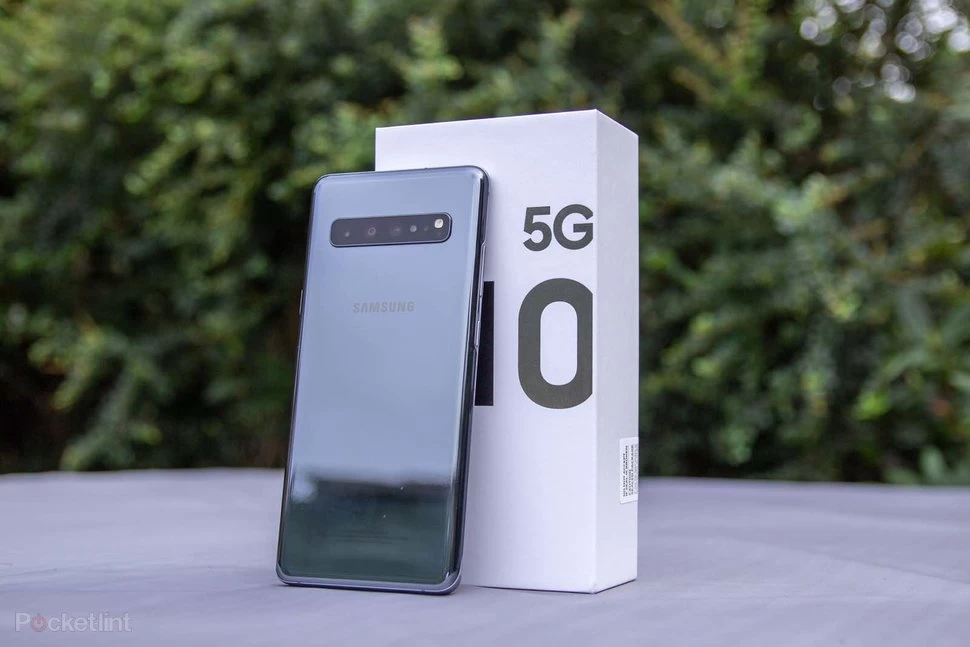Table of Contents
Samsung Galaxy S10 5G Specs and Price
The Galaxy S10 5G was unveiled among the other flagship smartphones at Samsung’s 2019 Unpacked event. This device outperforms every high-end feature we’ve seen in a Samsung Galaxy smartphone. As the name suggests, the phone’s most prominent feature is the 5G network technology. However, in addition to the arrival of 5G connectivity, there are many other remarkable characteristics, such a large display, a powerful battery, six cameras, including three 3D depth ToF cameras, and much more.
Samsung Galaxy S10 5G Key Specs & Features
- 6.7-inch Dynamic AMOLED Display, 1440 X 3040 pixels (502 ppi)
- Always On Display, HDR10+
- Android 9.0 (Pie), One UI with 8GB RAM
- Octa-core Qualcomm Snapdragon 845 (USA, China, Latin America), Octa-core Exynos 9810 (EMEA)
- 256GB / 512GB Built-in Storage, no Memory Card support
- 12MP + 12MP + 16MP + ToF Quad Rear Camera
- 10MP + ToF Dual Front Camera
- 4G LTE (up to 2 Gbps download) with VoLTE
- 5G (NSA Sub6 / mmWave)
- Fingerprint sensor (under Display)
- Fast Wireless Charging (15W capacity)
- Water and Dust Proof (IP68 certification)
- 4,500 mAh Non-Removable Li-ion Battery
Design and Display
You’d expect the Samsung Galaxy S10 5G to have the same specs and features as the Galaxy S10 save for the 5G network, but Samsung outdid themselves.
A quick peek at the phone reveals that it is larger and more complex than previous models. A thorough investigation will clarify the preceding assertion.
Samsung preserved a 0.3-inch gap in diagonal from the Galaxy S10e to the Galaxy S10 and Galaxy S10 Plus. The 6.7-inch screen on this phone follows the same pattern, making it the largest of the bunch. Then, in the upper right corner, you’ll find a large pill-shaped camera module representing the Infinity-O design.
Given the smartphone’s expanded functions, its huge diagonal is understandable. The phone’s 198g weight also validates its loaded entities; if normal criteria were applied, the phone’s weight would have been higher.
The 6.7-inch Dynamic AMOLED panel has a resolution of 1440 x 3040 pixels. Corning Gorilla Glass 6 and the Always-On Display are among the display’s features. Another Gorilla Glass 6 layer protects the phone’s aluminum chassis from the back. The cluttered camera setup in the back is another draw.
Battery
The Galaxy S10 5G smartphone is powered by a 4,500 mAh battery, the largest capacity ever seen on a Samsung Galaxy S handset. The long battery life is undeniable, but regular use of the 5G network may restrict the exceptional endurance, as 5G places greater demands on electricity.
It supports Fast Charging technology, Fast Wireless Charging 15W, and Wireless Powershare, which turns the phone into a wireless power bank, just like the rest of the bunch. Its Fast Charging, on the other hand, employs USB Power Delivery 3.0 to deliver 25W, which is faster than the competition.
Camera
To the average person, the phone’s cameras appear to be more than six. However, in reality, there are just two cameras in the front and four in the back. Because of the ToF / 3D depth sensing camera, which I’ll discuss later in this part, it may appear perplexing.
The 10MP primary sensor with f/1.9 aperture and the ToF camera are on the front, with the ToF camera replacing the 8MP depth sensor on the Galaxy S10 Plus. The 12MP main camera, a 12MP telephoto lens with 2x optical zoom, the 16MP ultra-wide sensor, the 3D depth camera, and the dual-LED flash are all found on the rear.
3D depth camera
The 3D depth sensor, also known as a ToF (Time of Flight) camera, estimates the distance between the camera and an object during an activity and generates 3D data about it.
It enhances portrait photographs with sufficient depth data and supports AR and VR applications. It also makes features like Video Live Focus and Quick Measure possible.
Samsung uses two sensors for the ToF camera on each side of the smartphone, which gives the impression that there are more than six cameras. One is an emitter, while the other is a Stereo Vision receiver.
Hardware and Software
The chipset of the smartphone is either Snapdragon 855 or Exynos 9820. The Snapdragon version has an octa-core 2.8GHz CPU that manages efficiency, while the Adreno 640 GPU handles graphics. The Exynos version has an octa-core 2.7GHz CPU and Mali-G76 MP12 GPU.
Only 8GB of RAM and 256GB of non-expandable storage are available in the memory section. In other words, the smartphone’s storage capacity cannot be increased. Meanwhile, the operating system on this device is Android 9.0 Pie with One UI.
Connectivity and Security
The Snapdragon X50 modem on board provides the handset with the much-anticipated 5G connectivity. According to network tests, the 5G network can download a 10GB file in 30 seconds. With Sub6 and millimeter wave (mmWave) 5G bands, the phone offers 5G non-standalone (NSA).
Other connectivity options include Wi-Fi 6, 2G, 3G, 4G LTE, USB-C 3.1, NFC, Wi-Fi Hotspot, and Bluetooth 5.0.
Although the phone’s front camera supports 2D Face Unlock, the ultrasonic fingerprint reader is the best form of security available. It’s at the lower third of the screen, underneath the display.
Samsung Galaxy S10 5G Price and Availability
The 256GB Samsung Galaxy S10 5G costs $299 (about 150,000 Naira) and the 512GB model costs $399 (approximately 200,000 Naira).
In most countries with 5G network coverage, the smartphone is currently available. The 256GB Galaxy S10 5G devices are presently selling for roughly $399 on Amazon, while the 512GB models are selling for around $745.
